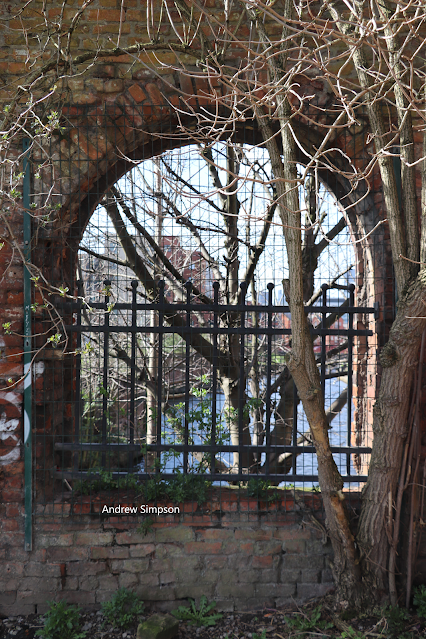Now little did I know when I stumbled into New Islington I
would contribute to a debate.
 |
| Canal shapes ... old and new, 2023 |
Its that new development between the Ashton and Rochdale
Canals bounded by Great Ancoats Street.
Historically it has always been New Islington and appears as
such on Johnson’s map of 1819, but that said the name did rather fall out of
use in favour of the Cardroom Estate which was a Municipal development of
social housing built in the 1970s.
 |
| 18th century house, 21st century tower, 2023 |
By the 2000s the area did seem to be in need of
“something”
given that the estate had slowly lost its pubs, shops, and eventually the local
primary school.
The bigger picture involved those bold plans to regenerate east
Manchester as first the colliery and then a swathe of factories, iron works and
chemical plants closed.
Along the way
the name Eastlands was coined, and we got a stadium fit for the Commonwealth
Games with other sporting venues coming up behind.
To this was added the decision to regenerate New Islington
which was a partnership between the City Council and the developer, Urban
Splash.
The Guardian carried three article in quick succession about
the plans along with a heap of silly comparisons with that other place in
London which has Islington in its name.*
One of the more well-balanced articles, came from the
Manchester Evening News in 2019.
It explored
the concerns of the Cardroom residents when the Council and Urban Splash announced
the regeneration plans, reported on the consultation process and focused on the
opinions of those residents who felt let down as well as those who thought it
had worked.**
 |
| A window to watch, 2023 |
I have to admit back in the early 2000s I gave it little
attention, and only got round to my first visit in November of 2022.
Since then, I have taken the tram from Chorlton to New
Islington on several occasions.
Each time
exploring a different aspect of the architecture, the history and just the feel
of the place, following up the visits with blog stories.
But there are those that point out that all this newness has
come at a cost, particularly for some of the residents of the Cardroom Estate
who were apprehensive about what might have been an invasion and take over of a
“metropolitan” way of life.
One observer has talked about residents being driven
away.
At which point I have to say I don’t know.
 |
| The water picture, 2023 |
Offers were made of houses in the same streets for those
that wanted them, which in turn has prompted me to go looking for more
information. The first is
Cardroom Voices, containing the photographs of Len
Grant and the stories and opinions of twelve of the Cardroom residents.***
After which I shall trawl the Manchester Evening News, and
the comments of the city Council and Urban Splash, along with more walks, more
photographs and more stories about the new New Islington.
 |
| Relics of The Soho Iron Works, 2023 |
Location; New Islington
Pictures; New Islington, 2023 from the collection of Andrew
Simpson
 |
| Setees and a canal, 2023 |
*New Islington to rise among satanic mills, Guardian February 1
st, 2002, Cardroom Voices Scheme targets vast area of urban decay, Guardian, March 29
th 2001, Manchester Unveils plans for a radically New Islington, the Guardian September 17
th, 2002
**Goodbye to the old council, Maya Black, February 9th, 2019,
https://www.manchestereveningnews.co.uk/news/property/new-islington-urban-splash-regeneration-15520086
***Cardroom Voices, Len Grant https://indd.adobe.com/view/53bfe9ea-1076-4f6e-9c6b-9b48600cca58



























%2Bcrop2.jpg)
%2Bcrop4.jpg)










.jpg)
.jpg)











